Key takeaways:
- Permaculture design principles focus on observing and interacting with the environment, using small and slow solutions to cultivate sustainability.
- Sustainable projects enhance personal well-being, foster community engagement, and can lead to long-term cost savings.
- Successful projects rely on clear communication, thorough planning, flexibility, and community involvement to align with local needs.
- Embracing trial and error, understanding environmental interactions, and exploring perennial crops are key lessons and future goals in permaculture design.
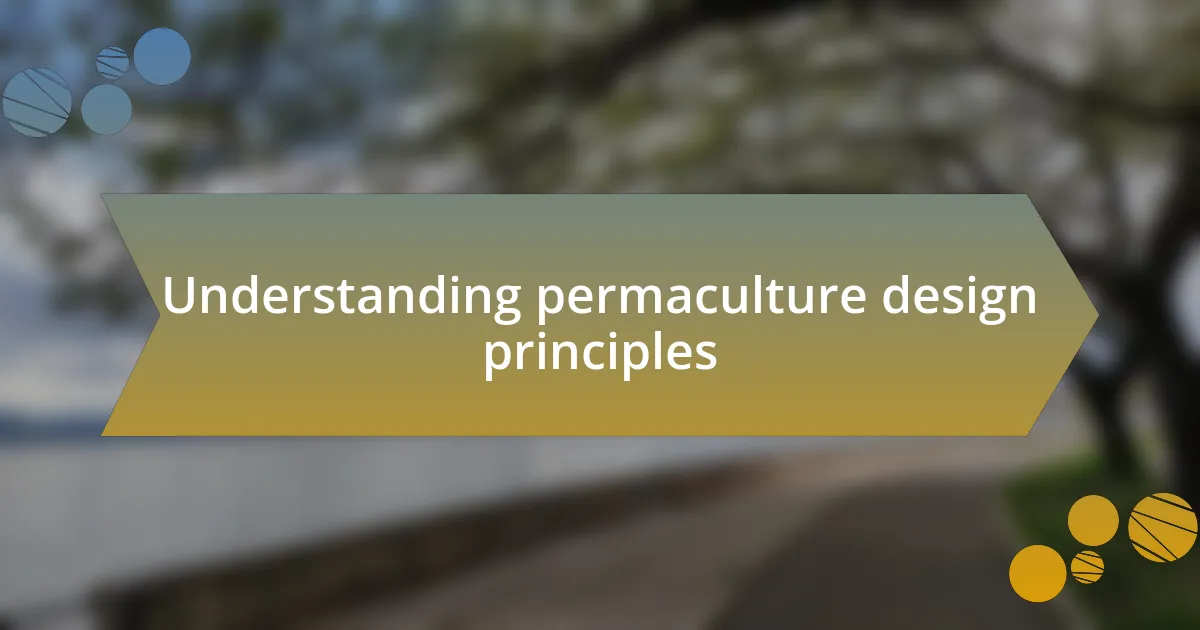
Understanding permaculture design principles
Permaculture design principles are fundamental concepts that guide how we can create sustainable systems mimicking the patterns found in nature. I remember my first encounter with these principles during a workshop; it was enlightening to see how interconnected systems can support each other. Who would’ve thought that simply observing a forest could inspire effective farming practices?
One of the core ideas of permaculture is “observe and interact.” This principle emphasizes the importance of taking the time to study your environment before making changes. Personally, I’ve found that spending quiet moments in my garden often reveals insights about soil health and plant relationships that I would have missed in a rush. Doesn’t it make sense to let nature guide our decisions, rather than forcing our will upon it?
Another principle is using small and slow solutions. Early on, I made the mistake of diving into large-scale projects without understanding what would thrive in my unique space. I quickly learned that patience often yields the most fruitful results. Isn’t it fascinating how nature often takes its time to build resilience, and we can apply that lesson to our own designs?
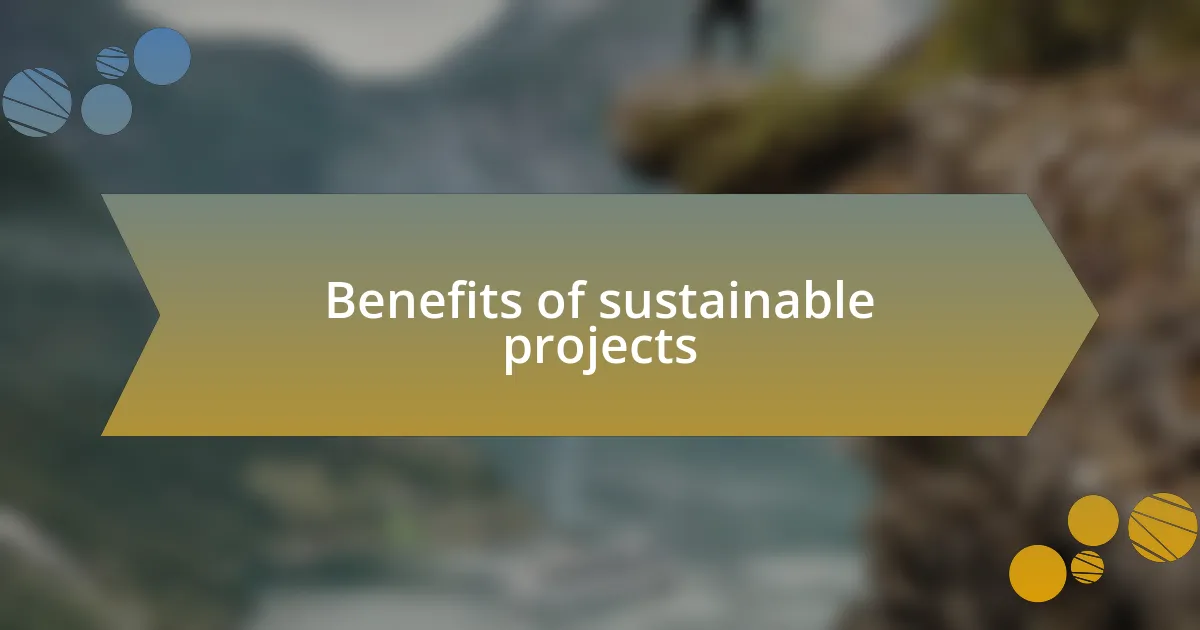
Benefits of sustainable projects
Implementing sustainable projects offers numerous benefits that extend beyond environmental impact, enriching our lives in various ways. For instance, I’ve noticed how much calmer I feel when I work in my sustainable garden compared to traditional gardening. It’s as if nurturing the earth alongside its natural rhythms has a calming effect on my mind. Have you ever felt that connection to the environment? It truly creates a sense of harmony.
Working on sustainable projects also fosters a strong sense of community. I remember when I organized a local composting workshop; it encouraged not just the sharing of knowledge but also the camaraderie among participants. Seeing neighbors come together—not only to learn but to support each other—reminded me of the powerful relationships that can blossom when we pursue a common goal. Isn’t it amazing how such initiatives can strengthen our social fabric while promoting sustainability?
Moreover, sustainable projects can significantly reduce long-term costs. While the initial investment might seem daunting, I’ve always found that focusing on eco-friendly materials and methods often leads to savings in the long run. For example, I switched to rainwater harvesting in my garden, which not only quenched my plants’ thirst but also cut down on my water bill. Don’t you think investing in sustainability today sets the foundation for a more economical tomorrow?
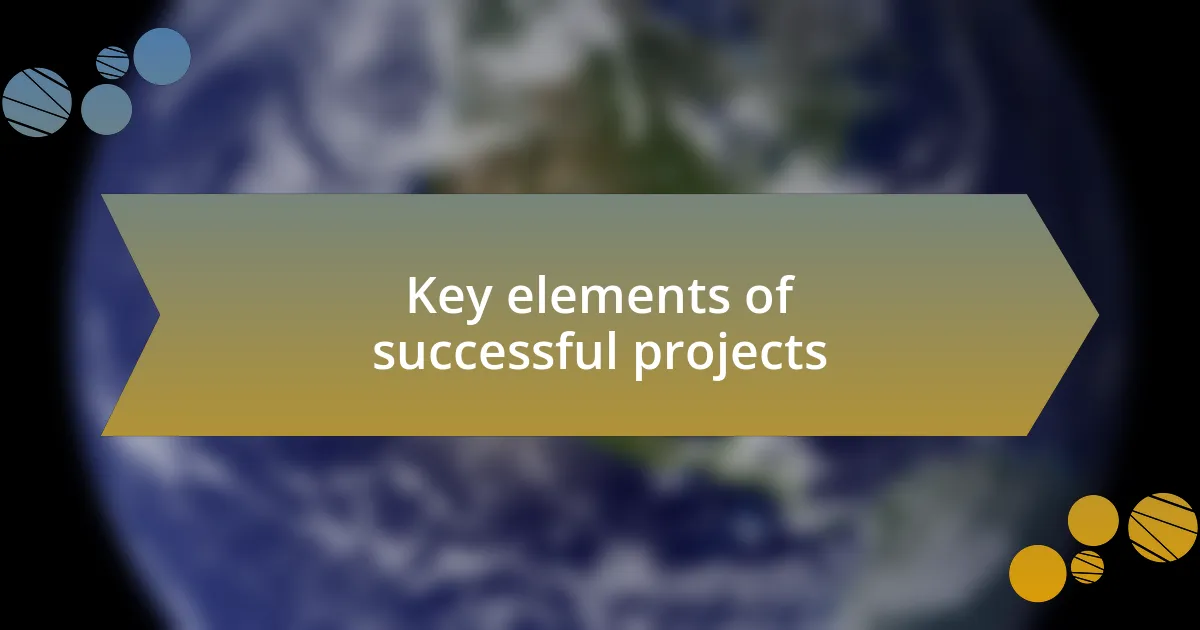
Key elements of successful projects
Successful projects hinge on clear communication among all stakeholders. I’ve learned firsthand that when everyone understands the project goals and their specific roles, it can transform an idea into reality more efficiently. Have you ever been part of a team where miscommunication created chaos? It’s such a preventable challenge, yet so critical to address.
Another key element involves thorough planning and flexibility. During my own endeavors, I’ve found that creating a detailed roadmap helps guide progress, but being willing to adapt when unexpected challenges arise is equally important. One time, I had to shift my approach mid-project due to unforeseen weather conditions, and it turned out to be a blessing in disguise—it pushed me to explore new techniques that ultimately enhanced the project’s success.
Lastly, I believe that engaging the community is crucial. In my experience with local permaculture workshops, inviting community input not only fosters deeper connections but also ensures that the project aligns with local needs and values. Have you ever participated in something that felt truly collaborative? It’s incredible how a project can flourish when everyone feels a sense of ownership and contribution.
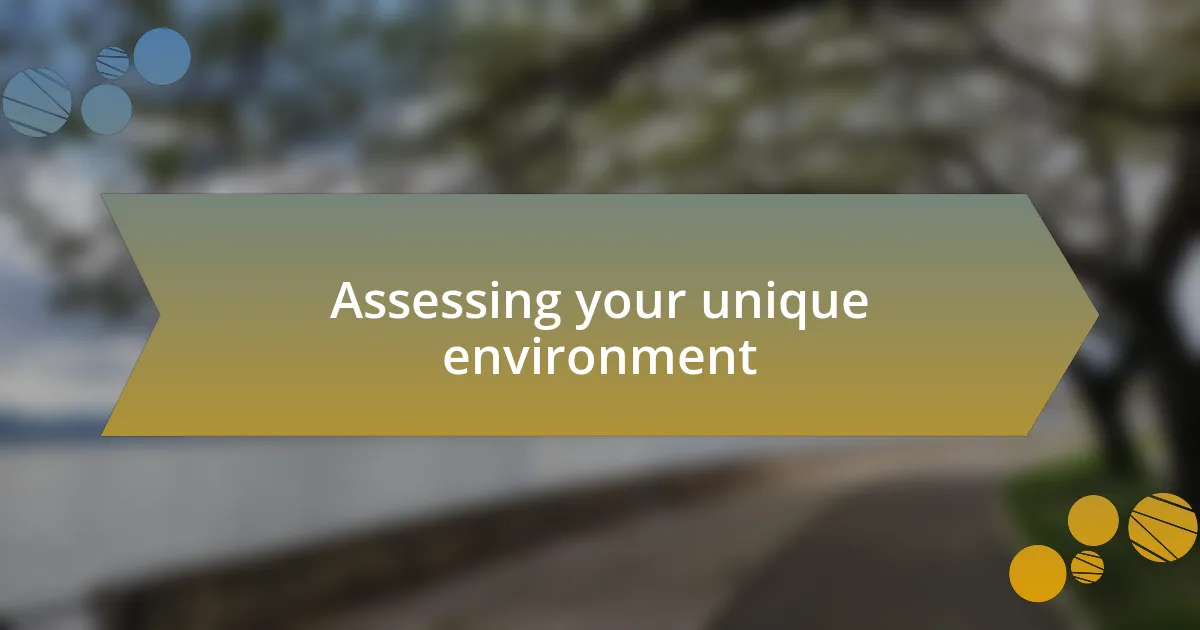
Assessing your unique environment
When I assess my unique environment, I start by observing the natural patterns around me. For instance, I once spent an afternoon just watching how sunlight filters through the trees in my backyard. I found that certain areas received direct sunlight, while others remained shaded. This simple observation helped me identify ideal spots for planting different crops, taking advantage of their specific light needs. Have you ever noticed how some parts of your garden thrive while others struggle? Understanding those subtle differences can make all the difference.
Soil health is another crucial aspect I consider. I remember taking the time to test my soil’s pH and nutrient levels—a tedious task, but one that paid off enormously. By knowing what I had to work with, I could amend the soil appropriately, which led to healthier plants and a more productive garden. Have you ever tried to grow something only to be disappointed with the results? It’s often not about the plant itself but rather the foundation it grows in.
Finally, I take a moment to consider the surrounding ecosystem. I’ve learned that fostering relationships with local flora and fauna can lead to surprising benefits, like natural pest control. One evening, I noticed a group of ladybugs on a plant that often faced aphid infestations. I realized that promoting biodiversity in my garden not only enhances its beauty but helps maintain a balanced environment. How does your environment shape what you grow? Understanding these interactions can lead to a thriving, harmonious space.
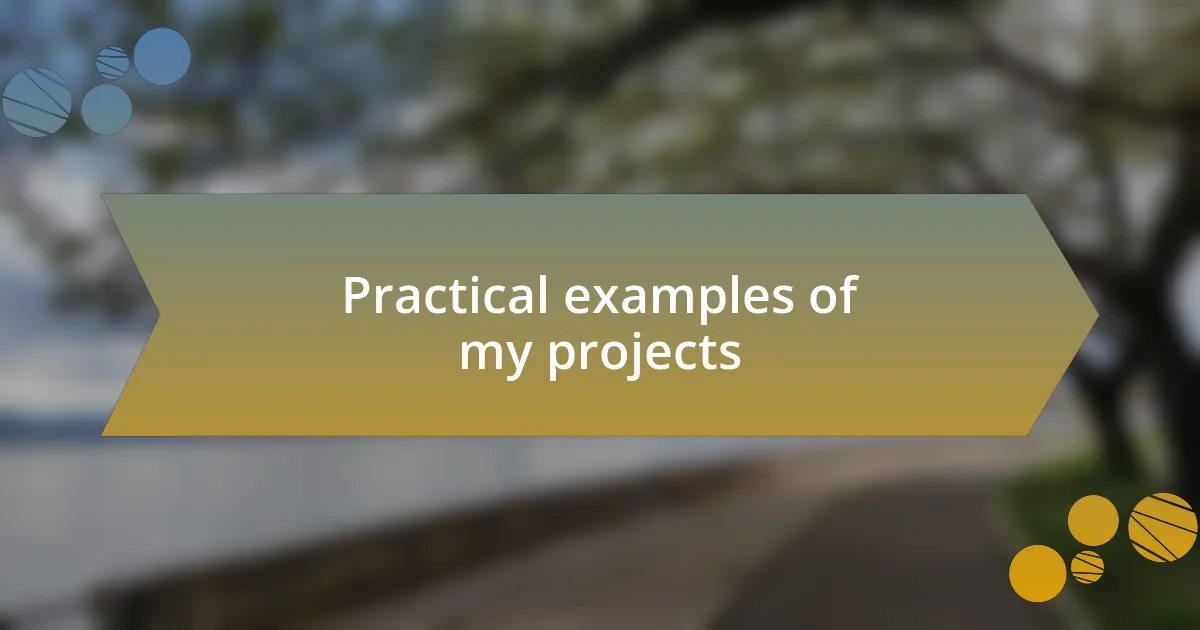
Practical examples of my projects
One of my favorite projects has been transforming a neglected corner of my yard into a vibrant butterfly garden. I started by selecting native plants that I knew would attract pollinators. Watching the butterflies flutter in after just a few weeks was incredibly rewarding. Have you ever created a space specifically for wildlife? It’s gratifying to see how quickly nature responds when given the right environment.
In another project, I experimented with a vertical garden on my back porch. I wanted to make the most of limited space while keeping my herbs easily accessible. Using repurposed wooden pallets, I built a vertical planter. It not only looks charming but also allows me to enjoy fresh basil and mint right at my fingertips. Has creating something functional and beautiful ever brought you joy in your own space?
Lastly, I took on the challenge of developing a rainwater harvesting system. By installing barrels under my gutters, I can collect water during heavy rains, which has eased my concerns about water usage during the dry months. It’s satisfying to know I’m utilizing resources efficiently. Have you considered how you can capture and reuse water? It’s a simple change that can make a significant impact on your sustainability efforts.
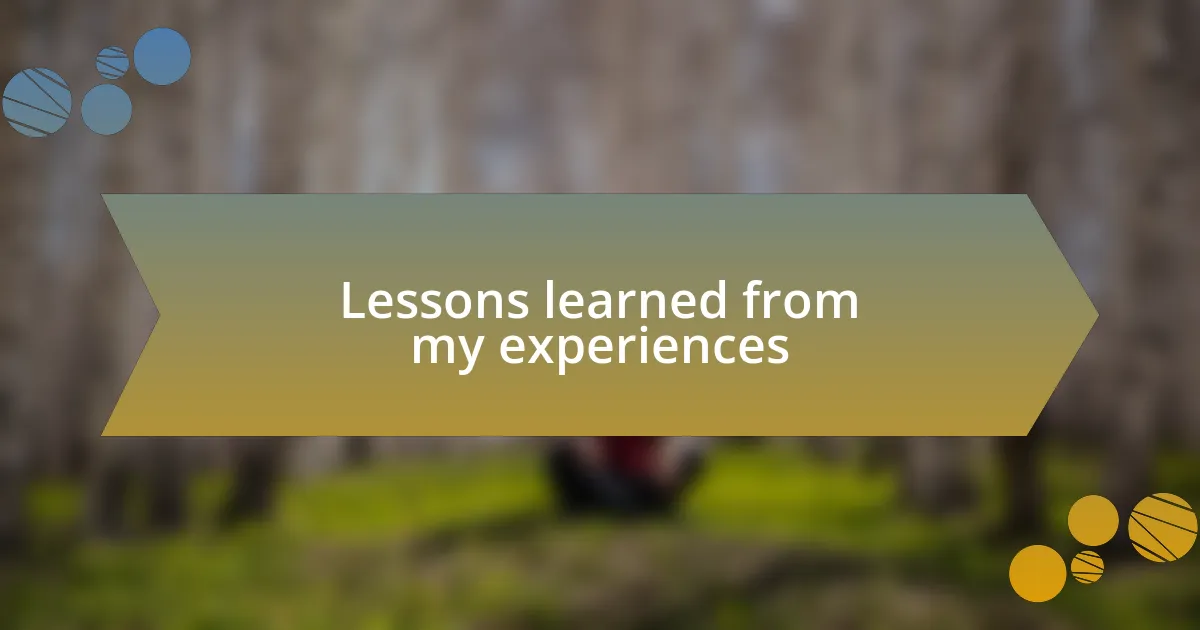
Lessons learned from my experiences
Embracing trial and error has been crucial in my permaculture journey. There was a time I planted a variety of crops too closely together, thinking they would all thrive in the same space. Instead, I learned the hard way about competition for resources. The resulting stunted growth reminded me that patience and proper spacing can significantly enhance productivity in my garden. Have you ever faced setbacks that taught you invaluable lessons?
One significant lesson came from observing the layout of my garden throughout the seasons. Initially, I underestimated the impact of sunlight and shade on different plants. I relocated several crops based on their light needs, and the difference was remarkable. This experience made me appreciate the dynamic interplay of elements in a permaculture design. Have you considered how good observation can refine your design practices?
Creating a mulching system using leaves and grass clippings not only improved soil health but also reduced the time I spent weeding. At first, I was apprehensive about letting nature reclaim some areas. However, seeing the thriving ecosystem emerge was a rewarding transformation. It made me realize that sometimes, stepping back and allowing nature to take its course can yield the best results. Isn’t it intriguing how nature can guide us when we let it?
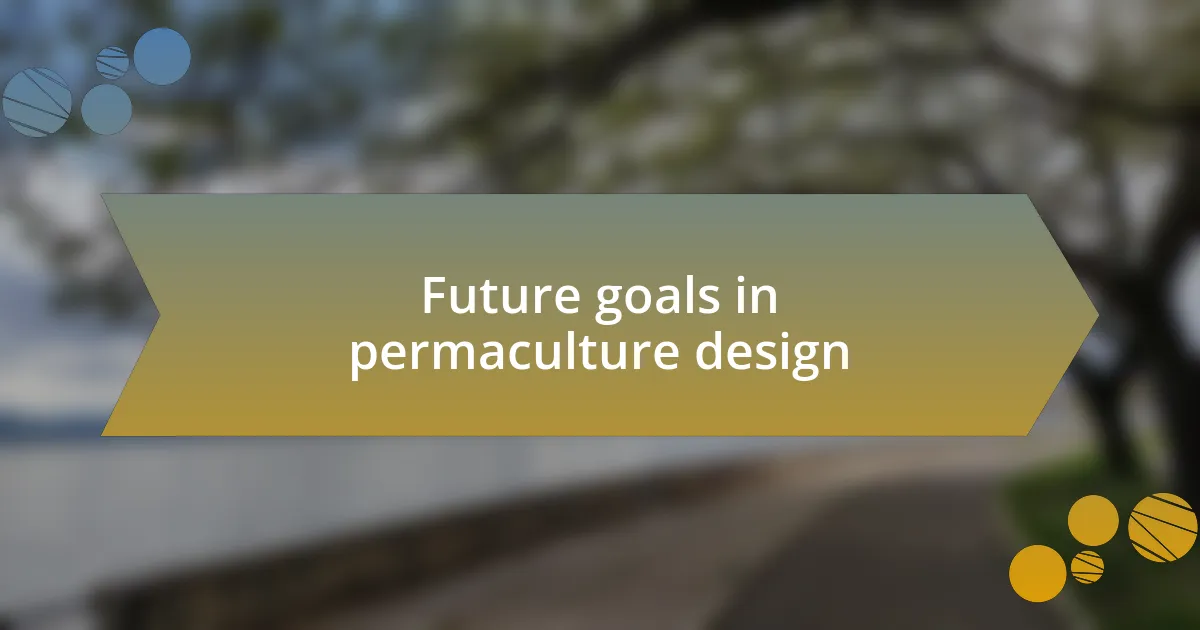
Future goals in permaculture design
Future goals in permaculture design
As I look ahead, one of my primary goals is to innovate more sustainable water management systems. In my experience, even small adjustments can yield significant benefits, but I see the potential for much greater efficiency. Have you ever contemplated how capturing and utilizing rainwater could transform your landscape? By integrating rain gardens and swales, I aim to enhance water retention and reduce runoff, leading to healthier plants and an improved ecosystem.
I’ve also begun to envision a more interconnected community through collaborative permaculture projects. My interactions with neighbors have sparked the idea of creating a local permaculture hub, where we can share resources, knowledge, and even harvests. How could such a collaboration enrich your community? I believe that fostering relationships and building a network not only enhances individual gardens but also contributes to community resilience.
Lastly, I’m excited about exploring perennial crops further. I had a few experiences with perennial vegetables that remain productive over the years, like sorrel and asparagus. The less work involved in maintaining these plants and the continuous yields inspire me. What if we could shift the focus from annual to perennial systems entirely? By investing in these long-term crops, my goal is to reduce labor and cultivate a more self-sustaining garden.